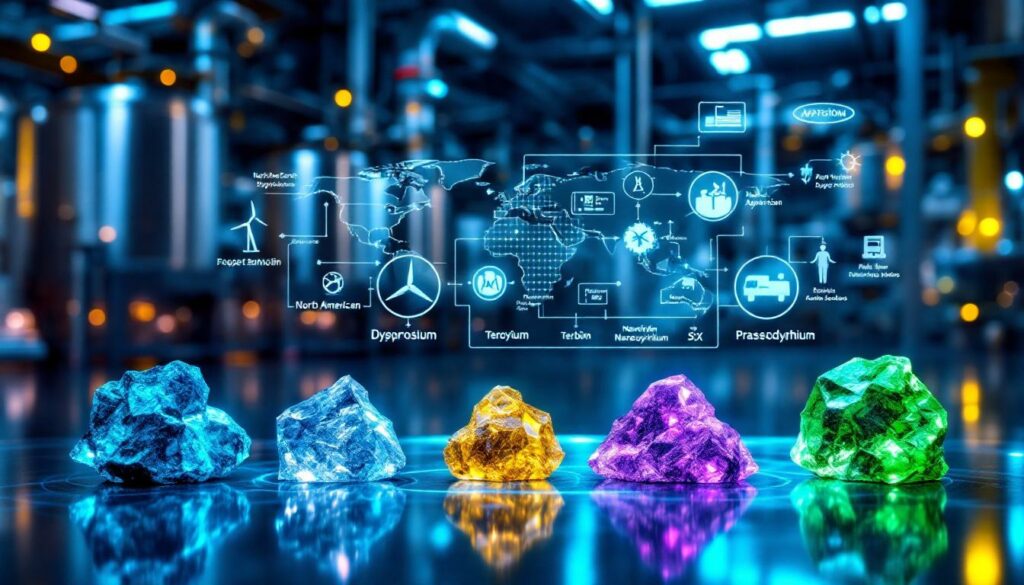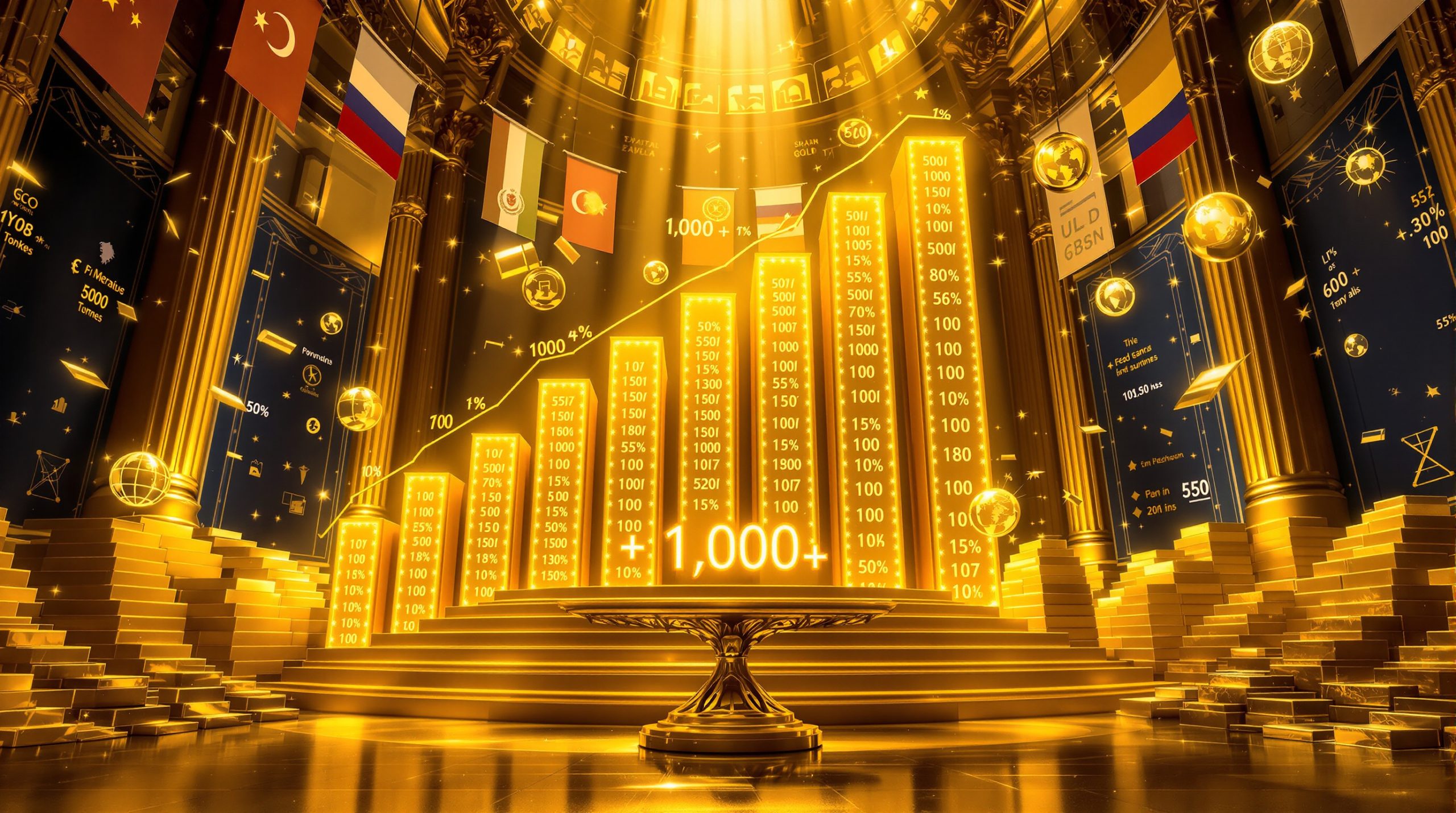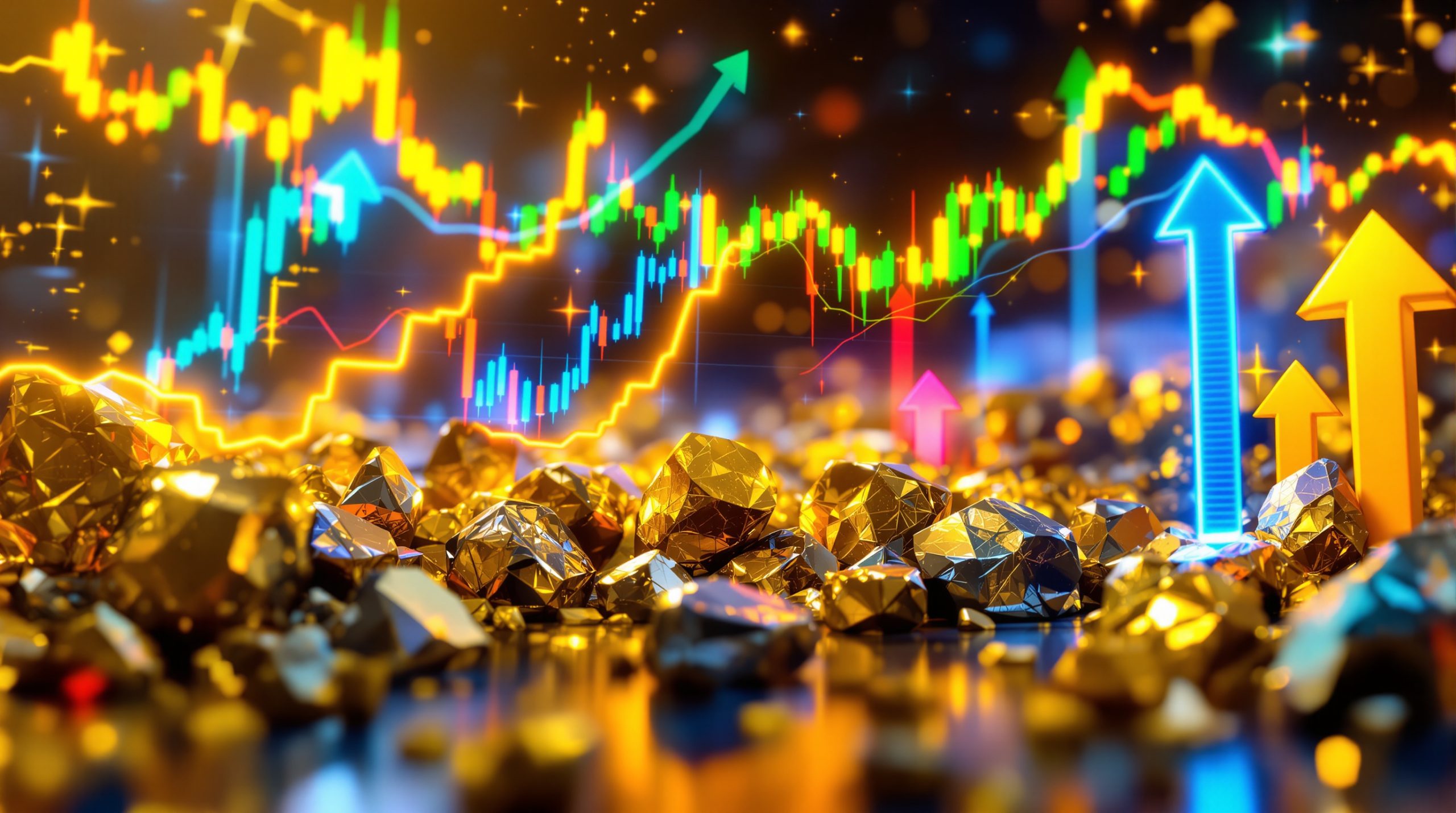What Are Rare Earth Elements and Why Are They Important?
Rare earth elements (REEs) comprise a group of 17 chemically similar metallic elements critical to advanced manufacturing and global technology. Despite being relatively abundant in the Earth's crust, concentrations suitable for cost-effective mining and processing are rare, making them strategically important resources.
Strategic Importance of Rare Earth Elements
-
Technology Applications: REEs are foundational to the production of smartphones, computers, advanced medical devices, and key automotive components, including electric vehicle batteries and drive motors.
-
Defense Applications: They are crucial for missile guidance systems, radar devices, and secure military communications.
-
Green Energy Transition: Permanent magnets made from rare earths like neodymium, dysprosium, and praseodymium are key to wind turbines and electric vehicle motors.
-
Supply Chain Vulnerability: As Pat Ryan, CEO of UKOR Rare Metals, highlights, "95% controlled by China"—emphasizing that China dominates virtually the entire supply chain for refining and processing.
-
Mining Context: Mountain Pass, a mine in California, stands out as "the only significant North American mine in the past 60 years," signaling the region's historical underinvestment in this critical sector.
"We work on that refining and processing that's currently 95% controlled by China. We're looking to bring it back to the western world."
— Pat Ryan, Chairman & CEO, UKOR Rare Metals
Why Is North America Developing Rare Earth Processing Capabilities?
Expanding rare earth processing in North America reflects a strategic shift to reduce reliance on overseas supply chains and strengthen energy, technological, and defense security.
Geopolitical Drivers
-
National Security: The Department of Defense has identified rare earths as "critical" for defense manufacturing resilience.
-
Supply Chain Resilience: Building local capabilities to minimize disruption from export restrictions and China rare earth trade disruption.
-
Industrial Policy: Proposals and grants supporting a vertically-integrated, North American processing-to-product ecosystem.
-
Trade Tensions: U.S.-China trade disputes revealing exposure of North American industry to supply vulnerabilities.
"Ford Motor Company recently they had to shut down their Chicago plant because they didn't have rare earth permanent magnets."
— Pat Ryan, UKOR Rare Metals
Pat Ryan also references an alarming situation:
"Wall Street Journal reported that anyone that was involved inside China with processing of heavy, were solvent extraction…passports were being confiscated people were told they could not leave the country."
This underscores how rare earth processing in North America is directly tied to concerns over supply security and freedom of operation.
Economic Opportunities
-
Fostering industries like AI, robotics, renewable energy, and electric vehicles.
-
Reviving skilled industrial manufacturing and processing jobs in North America.
-
Leveraging Western technical expertise to enhance process efficiency and environmental performance.
What Technological Innovations Are Driving North American Rare Earth Processing?
To rival established Asian players and minimize environmental impact, North American companies are pioneering advanced processing techniques.
Traditional Solvent Extraction vs. Rapid SX Technology
| Attribute | Traditional Solvent Extraction | Rapid SX Technology |
|---|---|---|
| Physical Footprint | Multiple football fields | One-third the space (column-based) |
| Environmental Impact | Open systems, high chemical emissions | Closed systems, minimal atmospheric exposure |
| Capital Expenditure | $300+ million (5,000 tons/yr) | $65–85 million (2,500–5,000 tons/yr) |
| Feedstock Flexibility | Limited (often one source) | High (multiple feedstock types) |
"Column based technology. It's one-third of the space. It's a closed system. It's not open to the environment."
— Pat Ryan, UKOR Rare Metals
- Nearly 6,000 hours of testing completed with Rapid SX, validating repeatability and stability at pilot scale (Source: Pat Ryan).
Environmental and Operational Benefits
-
Dramatically reduced chemical exposure and emissions.
-
Energy-efficient, with minimized water use due to enclosed operations.
-
Modular, scalable deployment, and digital automation (using PLCs and machine learning systems) for precision and efficiency.
How Is the Department of Defense Supporting Rare Earth Processing?
Recognizing the essential role of rare earths in national defense, the U.S. Department of Defense (DoD) has significantly ramped up investment and strategic partnerships.
DoD Investment Strategy
-
Technology Validation Grants: $4 million for demonstration-scale technology proof.
-
Commercial Deployment Funding: $18.4 million deployed for building the first commercial-scale plant.
-
Strategic Partnerships: Actively selecting and fostering public-private technology collaborations.
-
Floor Pricing Models: Considering mechanisms that would guarantee a minimum price for domestic producers.
Strategic Objectives
-
Secure supply of strategic elements such as dysprosium and terbium.
-
Encourage domestic production infrastructure in the U.S.
-
Maintain Western technological leadership and intellectual property in mineral processing.
Case Study: UKOR Rare Metals & DoD
-
UKOR's Rapid SX technology was selected by DoD as the most advantageous (compared to legacy SX methods).
-
Over 6,000+ operational hours on the pilot plant confirmed stability and scalability.
-
Ongoing grants are accelerating the build-out in central Louisiana—selected for its trade, logistics, and regulatory advantages.
What Are the Challenges in Developing North American Rare Earth Processing?
While promising advancements are being made, significant technical, financial, and market hurdles remain on the path to scale.
Technical Challenges
-
Achieving reliable, commercial-scale throughput with consistent product quality.
-
Adapting processes for variable mineralogies and contamination profiles.
-
Supporting workforce and specialized training in advanced metallurgical fields.
-
Protecting intellectual property amid increasing global competition.
Economic Challenges
-
Securing capital for capital-intensive projects amid market volatility.
-
Withstanding cycles of Chinese price competition (including potential dumping or rapid supply expansion).
-
Cultivating end-user trust and stable demand in a traditionally China-dominated supply landscape.
-
Achieving long-term commercial viability when initial government support tapers.
Supply Chain Challenges
-
Accessing concentrated, high-grade feedstock outside China and Myanmar.
-
Integrating disparate mining, processing, and manufacturing operations.
-
Navigating stringent environmental and permitting hurdles.
-
Compressing development timelines to meet urgent strategic market needs.
Where Are North American Rare Earth Processing Facilities Being Developed?
Strategic site selection is shaping the geography of rare earth processing in North America, guided by logistics, regulatory, and infrastructure priorities.
Key Development Locations
-
Central Louisiana: Commercial deployment of UKOR's Rapid SX facility, leveraging Foreign Trade Zones and logistics hubs.
-
Kingston, Ontario: Demonstration and pilot technology validation site.
-
Mountain Pass, California: Existing mining operations wedded to new processing investments.
-
Other Emerging Sites: Evaluated for chemical infrastructure, rail/port connectivity, and competitive energy access.
Strategic Site Selection Factors
-
Proximity to Foreign Trade Zones for tariff management on both inbound and outbound materials.
-
Access to skilled chemical and engineering labor pools.
-
Robust transportation and utility infrastructure.
-
Favorable regulatory and permitting environments.
What Products Will North American Rare Earth Processing Facilities Produce?
The new generation of processing plants in North America targets a mix of high-impact light and heavy rare earth elements for technology and defense applications.
Heavy Rare Earths (HREE)
-
Dysprosium: Essential for high-temperature permanent magnets (EVs, turbines).
-
Terbium: Used in high-performance magnets and specialty optics.
-
Samarium: Integral to samarium-cobalt magnets (aerospace/defense).
-
Gadolinium: Deployed in medical imaging and electronics.
Light Rare Earths (LREE)
-
Neodymium: The core input for NdFeB permanent magnets.
-
Praseodymium: Used alongside neodymium in magnet alloys.
-
NDPR: High-purity neodymium-praseodymium blends.
Production Capacity Targets
| Phase | Target Production (tons/year) | Purity Standard |
|---|---|---|
| Phase 1 | 2,000–2,500 | 99.9%+ commercial |
| Phase 2 | 5,000 | 99.9%+ commercial |
| Phase 3 | 10,000 | 99.9%+ commercial |
How Are Feedstock Sources Being Secured for North American Processing?
A sustainable rare earth processing in North America depends on a diversified and reliable feedstock pipeline.
Global Sourcing and Diversification
-
Brazil: Favorable grade and geological characteristics, potential for high-impact supply partnerships.
-
Australia: Established rare earth operations offering partnership and contract offtake opportunities.
-
Vietnam: Emerging as a pivotal HREE supplier.
-
Eastern Africa: Ongoing exploration, particularly for ionic clays and monazite deposits.
Types of Feedstock Minerals
-
Monazite: Phosphate-rich, with both light and heavy rare earths (often with thorium as a byproduct).
-
Bastnaesite: Contains mainly light rare earths; key current global source.
-
Ionic Clays: Notable for high HREE content and low radioactivity, pivotal for strategic supply.
-
Blended Feedstocks: Combining sources to optimize process yields and economic return.
Partnership and Supply Models
-
Definitive Agreements: Binding contracts with upstream miners ensure security of supply.
-
Value Sharing: Integrated economic models, rewarding both resource owners and processors.
-
Risk Reduction: Diversifying geographically and by partner to enhance reliability.
-
Development Support: Processors willing to sign offtake agreements, enabling upstream fundraising and project finance.
What Economic Models Are Emerging for North American Rare Earth Processing?
Adapted business structures and pricing models are essential to compete against established, often state-supported, Asian players.
Western Supply Chain Pricing
-
Floor Price Mechanisms: DoD exploring guaranteed minimums to stabilize investment.
-
Strategic Premiums: Recognizing that secure domestic supply commands higher value.
-
Long-Term Contracts: Improving planning and reducing volatility for both sides.
-
Government Participation: Grants and strategic purchases underpin private sector viability.
Integrated Supply Chain Design
-
Four-pronged partnerships linking mining, chemical processing, alloy production, and end use.
-
Value-sharing arrangements creating commercial continuity from the mine to the finished magnet.
-
Transitioning from "memoranda of understanding" to enforceable delivery commitments.
-
Reverse-engineered supply chains, tailored directly to customer specification and projected demand.
Investment Environment
-
Access to DoD and DOE grants accelerates buildout.
-
Private capital and end-user investment increasing as risk-reward profile improves.
-
Partnerships provide financial and technical de-risking.
-
Focus remains on sustainable returns versus artificially depressed spot prices.
What Timeline Is Expected for North American Rare Earth Processing Development?
A methodical, milestone-driven approach defines the rapid yet deliberate buildout of rare earth processing in North America.
Timeline Table
| Year(s) | Milestone |
|---|---|
| 2019 | Technology acquisition and initial demonstration |
| 2020–2023 | Pilot plant construction and operational testing |
| 2023–2024 | Commercial engineering and scale-up planning |
| 2024–2025 | Equipment procurement and site preparation |
| Mid-2026 | Targeted initial commercial production (2,000–2,500 t/y) |
| 2027–2028 | Phase 2 expansion (5,000 t/y) |
| 2029–2030 | Full capacity expansion (10,000 t/y) |
Development Philosophy
-
Extensive Validation: Over 6,000 hours of demonstration plant run-time before scaling.
-
Phased Rollout: Reducing risk, allowing incremental optimizations.
-
Operational Learning: Each stage incorporates feedback for process refinement.
-
Partner-Driven: Strategic alliances with government, industry to align outputs with needs.
What Is the Future Outlook for Rare Earth Processing in North America?
The rare earth processing renaissance in North America is poised to generate profound supply chain, technological, and geopolitical impacts in the coming decade.
Market Growth and Demand Projections
-
Permanent magnet demand forecasted to increase 200% by 2030.
-
Robotics may "become the single largest consumer of rare earth magnets by 2035," according to sector forecasts.
-
Defense and advanced manufacturing requirements expected to outpace current capacity.
-
Electrification and renewable energy deployment accelerating demand growth year-over-year.
Strategic and Industry Implications
-
Dramatic improvement in North American supply chain resilience and independence.
-
Western leadership in environmental stewardship and processing innovation ("doing it cleaner and smarter").
-
Expansion of supporting industries—magnet making, metals, and downstream manufacturing.
-
Positioning for a multi-processor competitive landscape, supporting both specialization and vertical integration.
"Building blocks of technology as we call them, light and rare earth oxides that connect the mine upstream and the magnet makers, the metal alloy makers downstream."
— Pat Ryan, UKOR Rare Metals
Risks and Speculative Considerations
-
The sector may witness price turbulence if China responds aggressively to Western development.
-
Intellectual property battles and workforce shortages may constrain ramp-up speed.
-
Full value chain (mine to magnet) integration in North America could take several more years beyond initial processing capacity.
Disclaimer: Projections, forecasts, and speculative points are based on current industry trends and expert interviews. Future market conditions, regulatory environments, and geopolitical dynamics may differ significantly and could affect outcomes described herein.
FAQ About Rare Earth Processing in North America
What are the most critical rare earth elements for North American security?
Heavy rare earths such as dysprosium and terbium are the most critical for defense and advanced technology because of their importance to permanent magnets, jet engines, and electronic guidance systems. Samarium is also vital for specialized Isomag applications in defense and aerospace.
How does North American rare earth processing technology compare to Chinese methods?
Solutions like Rapid SX deploy a closed-column, modular approach, occupying one-third the footprint of conventional solvent extraction, and achieving similar or better purity with energy and capital savings. Traditional methods in China require "multiple football fields" and significant open chemical storage—posing environmental and efficiency risks.
What role does the Department of Defense play?
The DoD is acting as a market catalyst by funding proof-of-concept, commercial ramp-up, and "floor price" concepts, offering stability while new entrants establish product quality and scale. They also coordinate strategic stockpiling and offtake to ensure continual supply for military programs.
Where will North American rare earth processing facilities source their feedstock?
Processors are securing diverse sources, from Brazilian and Australian mines with high-quality monazite and bastnaesite, to Vietnamese and African projects, often via definitive supply contracts or economic partnership models to ensure stability.
When will commercial production start?
Initial plant start-up is forecasted for mid-2026 (2,000–2,500 t/y), with further expansions at 18–24 month intervals, targeting a 10,000 t/y capacity soon after decade's end, as per current project timelines.
What global market impact is expected?
Rare earth processing in North America will boost supply security, increase pricing predictability, drive environmental and social standards higher, and support innovation in critical industries such as green energy, advanced mobility, and national defense.
Further Exploration:
For a comprehensive, visual introduction to rare earth refining and process technology, refer to UKOR Rare Metals' educational YouTube content, which expands on these sector-defining developments. Furthermore, recent advancements in rare earth breakthrough technologies and initiatives toward critical minerals energy security demonstrate the growing importance of domestic processing capabilities. Additionally, developments in Australia's strategic reserves and [European CRM facilities
Ready to Capture the Next Big Mineral Discovery?
Discover how early investors in rare earth and other critical mineral companies have generated exceptional returns by accessing Discovery Alert's proprietary Discovery IQ model at discoveryalert.com.au/discoveries/, providing real-time ASX announcements that could signal the next major investment opportunity.




